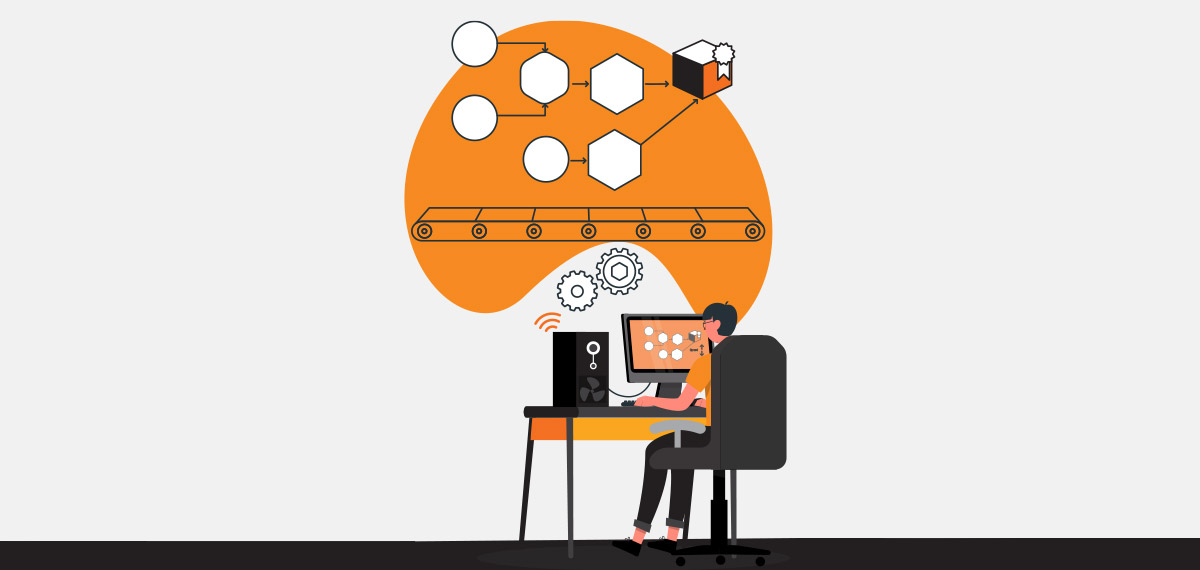Jyoti CNC: Beginner’s Guide to Industry 4.0
Most of the companies today work on a unique basis. But all of them have a common goal – to have a common system in order to connect and have access to real-time data. This is where the Internet of Things plays an integral role. Internet of Things, or the IoT, is a digital network of various software, sensors, and other components which are connected to the internet. This enables the software and sensors to communicate real-time data via the internet in order to increase efficiency.
We are currently in the middle of what economists call Industry 4.0, or as it is also called, the Fourth Industrial Revolution. This revolution refers to the interconnection of two of the largest components of the industry – automation, and manufacture. When put simply, it is the digital transformation of the ongoing advanced manufacturing processes with the help of various smart technologies such as artificial intelligence, machine learning, and big data.
Industry 4.0 is based on four design principles: interconnection, information of transparency, technical assistance, and decentralized decisions. Interconnection refers to the ability of the machines to communicate with each other via the IoT. The transparency of information provided by Industry 4.0 enables operators to access real-time data to make informed decisions. Unsafe tasks can be completed with the help of automated machines, and technical assistance can be provided to operators in decision-making and problem-solving situations. Finally, the ability of cyber-physical systems to make their own decisions will enhance productivity and autonomously as possible.

With the introduction of computers during the Third Industrial Revolution in the late 20th century, many products lay the foundations for the components of the Fourth Industrial Revolution that we are a part of right now. These components have seemingly become a part of our social and private lives. Technologies ranging from mobile devices to smart sensors can be found in every household, while almost every industry uses IoT and Big Data analytics. Augmented Reality and 3D printing are the heralds of the innovations in their respective domains. All these components together contribute to Industry 4.0.
In a broader sense, Industry 4.0 is not something that happens instantly or overnight. Unlike the previous Industrial Revolutions, where certain inventions brought about changes in the coming years, there are trends that set the tone for the Fourth Industrial Revolution. The reason behind this is that at its heart, Industry 4.0 is an ongoing process of digitizing the existing manufacturing process, and it is these aforementioned trends that set in motion the events for Industry 4.0. Certain trends which have started are given below
1. Smart Sensors – Sensors form the central force of innovation. They collect and generate data and allow the monitoring of complex processes. However, there are issues such as loss of data and synchronization error as well as dealing with large amounts of data that need to be looked into to make the sensors better.
2. Predictive maintenance – With the use of IoT and smart sensors, manufacturers potentially have the ability to recognize and identify any maintenance issue while the process is going on. This allows them to perform a maintenance run that is cost and time-effective, which results in longevity of the machines.
3. Smart Factory – Industry 4.0 has given rise to what is called a ‘Smart Factory’. Components such as IoT, cyber-physical systems enable the various components of the factory to coordinate with each other as well as their human counterparts for efficient output and save time and costs.

Although the trends have already begun, companies still face a number of challenges while implementing the changes in their company. The biggest issue is the concern for privacy since all the machines will be connected to the internet. The lack of clarity on the security of data also contributes to the challenge posed. Automation of certain processes might eliminate the need for human interference altogether, which will lead to the loss of jobs in the company. And since the automation will require a skill set that many employees might not possess, the transition to an automated manufacturing unit becomes a steep climb. Apart from these, the cost of automation is also quite high, which may dissuade companies from shifting to an automated manufacturing unit.
Despite these challenges, there are companies that are slowly assimilating the Industry 4.0 trend. The question that arises here is why should a company go ahead and change its factory floor plan to match the business model of Industry 4.0. The answer is simple – to be on the same pace as the rest of the world. A company that has adopted Industry 4.0 will be more likely to attract a younger workforce, which will have the skill set required to run the automated manufacturing unit. Indus-try 4.0 also enables better collaboration and communication between different departments of the company, thereby making the team of employees stronger. It also allows for quick and efficient problem-solving of potential issues. Lastly, it allows the company to make smarter, faster, and more reliable decisions due to the access to real-time data.
The coming years will be a prosperous time for the manufacturing industry. The wave of digital technologies opens up new avenues for these industries to start working towards greater flexibility, productivity, and sustainability. The Fourth Industrial Revo-lution is creating new pathways for humans and machines to work together. But only by staying abreast with the modern technologies, will manufacturers be able to exploit the most from the coming Industrial Revolution.
This content was originally published on the Jyoti CNC website.

